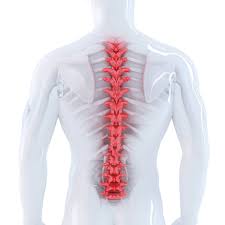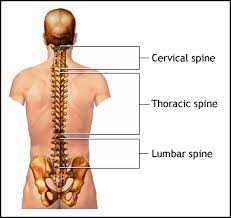

If you are like me, you have probably spent countless hours hunched over a computer, phone, or even a book, unknowingly training your body to adopt a harmful posture.
Forward Head Posture (FHP) is one of the most common postural problems today, especially in our tech-driven world. It occurs when your head juts forward, putting excessive stress on the neck, shoulders, and, surprisingly, the thoracic spine.
Yes, that area of your back between the neck and lower back bears the brunt of this seemingly innocent habit. But how exactly does forward head posture harm your thoracic spine?
Let me break it down for you by sharing my own journey through poor posture habits and how they led to discomfort and pain in my thoracic region.
Article Index
- What Is Forward Head Posture?
- Understanding the Thoracic Spine: Its Role and Importance
- How Forward Head Posture Affects Your Thoracic Spine
- Daily Lifestyle Habits That Worsen Thoracic Posture
- Scientific Evidence Linking FHP to Thoracic Spine Damage
- Common Symptoms of Thoracic Spine Nerve Damage
- Conclusion: How to Protect Your Thoracic Spine from Forward Head Posture
What Is Forward Head Posture?
Forward Head Posture (FHP) occurs when the head moves forward from its natural alignment with the spine, typically by several inches.
This poor alignment is often a result of spending long periods looking down at phones, computers, or books.
For every inch your head moves forward, the weight placed on your neck and upper back increases by an additional 10 pounds.
If left unchecked, FHP does not just strain the muscles around your neck—it can also severely affect your thoracic spine posture.
FHP has become a modern epidemic, especially with the rise of desk jobs and smartphone usage.
I did not think much of it until I began to notice tightness in my upper back, and the connection between my forward head tilt and thoracic discomfort became all too clear.
Understanding the Thoracic Spine: Its Role and Importance
The thoracic spine is the midsection of your back, located between the cervical (neck) and lumbar (lower back) regions.
This section consists of 12 vertebrae that protect vital structures like the heart and lungs. The thoracic spine plays a crucial role in supporting the upper body and maintaining proper posture.
In my case, I did not realize how important thoracic spine posture was until I started feeling discomfort there.
The thoracic spine is naturally curved, but when FHP persists, that natural curve gets exaggerated, leading to thoracic spine damage.
This creates a cascade of issues that we shall dive into next.
How Forward Head Posture Affects Your Thoracic Spine
When the head shifts forward in FHP, it throws off the alignment of the entire spine, especially the thoracic region.
The muscles surrounding the thoracic spine have to compensate for this misalignment, which leads to chronic strain and, eventually, structural changes in the spine itself.
In my experience, after years of FHP, I began to notice increased stiffness and pain in the mid-back region.
The muscles in the thoracic area were constantly overworking to keep me upright, which led to discomfort, especially when sitting or standing for extended periods.
This strain can lead to issues like thoracic outlet syndrome posture, where the muscles and nerves between the neck and shoulder are compressed due to poor posture, causing pain and numbness.
Additionally, FHP causes compression on the thoracic vertebrae, which can accelerate wear and tear on the spine.
Over time, this can lead to long-term issues, such as damage to the thoracic spine or even more serious conditions like postural thoracic outlet syndrome, a nerve and blood vessel compression issue that I experienced firsthand.
Daily Lifestyle Habits That Worsen Thoracic Posture
In our daily lives, it is easy to slip into habits that worsen our posture without even realizing it. Here is a peek into my daily routine that contributed to my thoracic spine issues:
- Sitting for Long Periods: I spent hours at my desk without taking breaks to stretch or adjust my posture. This constant hunching not only strained my neck but also exaggerated the curve of my thoracic spine.
- Phone Addiction: Constantly looking down at my phone led to chronic forward head tilt, which directly affected the alignment of my entire spine.
- Improper Sleep Posture: Sleeping on my stomach with my head turned to the side strained both my neck and thoracic spine. Incorrect sleeping posture led to morning stiffness that worsened throughout the day.
Each of these habits may seem minor, but they compound over time and worsen thoracic posture.
As I have learned, consistency in poor posture will eventually lead to problems like pain in the thoracic region, tightness in the shoulder blades, and even damaged thoracic nerves.
Scientific Evidence Linking FHP to Thoracic Spine Damage
There is solid scientific backing to the connection between FHP and thoracic spine damage.
A study published in the Journal of Orthopaedic & Sports Physical Therapy found that individuals with FHP had significant thoracic spine dysfunction compared to those with proper posture.
The increased curvature in the thoracic spine puts pressure on both the spine itself and the surrounding muscles.
Another study in the Journal of Physical Therapy Science highlighted how forward head posture can lead to thoracic spine nerve damage symptoms like pain, numbness, and restricted movement.
I experienced these symptoms firsthand—stiffness in the upper back, sharp pains when moving my shoulders, and constant discomfort when I had to sit for long periods.
Chronic FHP can also damage the thoracic nerves over time, leading to conditions like thoracic outlet syndrome posture.
When the nerves are compressed for long periods, as is common in postural thoracic outlet syndrome, you may experience tingling or weakness in the arms and hands.
I started noticing these issues after several months of ignoring my poor posture, only realizing later that the damage to the long thoracic nerve had caused the tingling sensation.
Common Symptoms of Thoracic Spine Nerve Damage
So, what does thoracic spine nerve damage feel like?
Based on my experience and medical consultation, I learned that the symptoms are quite varied but often include:
- Sharp, Radiating Pain: This pain can travel from the thoracic spine into the ribs and shoulders. For me, this manifested as a constant burning sensation after long hours of sitting.
- Tingling and Numbness: Damage to thoracic spine nerves can cause numbness in the upper back and even the arms. I remember feeling like my arms were ‘falling asleep’ more often than usual.
- Reduced Range of Motion: Stiffness in the thoracic spine made it difficult for me to perform daily tasks like reaching overhead or twisting from side to side.
- Muscle Weakness: The constant strain on the thoracic muscles weakened them, making even light activities feel exhausting.
These symptoms, combined with a diagnosis of postural thoracic outlet syndrome, made it clear that my forward head posture had caused real damage to the thoracic region.
How to Protect Your Thoracic Spine from Forward Head Posture
In conclusion, forward head posture does not just affect the neck; it has a significant negative impact on the thoracic spine.
But, is forward head posture correctable???
Well, the shoulder muscles, joints, and nerves in the thoracic area are strained as they try to compensate for the imbalance caused by FHP.
Over time, this can lead to long-lasting problems like thoracic spine damage, nerve pain, and restricted movement.
In my case, the damage to the long thoracic nerve and the symptoms of thoracic spine nerve damage were eye-openers.
Poor posture may seem harmless at first, but the cumulative effects are real. The key takeaway here is that daily habits and posture awareness are critical in preventing thoracic spine issues.
If you are dealing with forward head posture, paying attention to your thoracic spine posture could save you a lot of pain down the road.
References:


